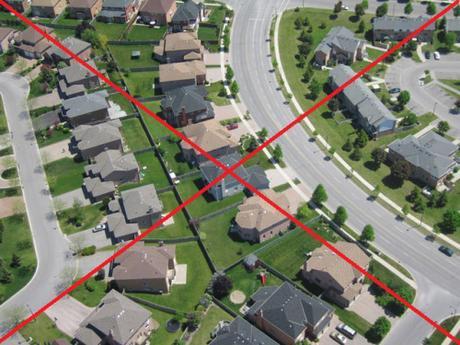If you’re living in a neighborhood of mainly “whites,” or Christians, or non-refugees, or middle-class income earners, or traditional man-woman households, and your town or city receives federal dollars, say goodbye to the neighborhood as you have known it.

As explained by Ed Gramlich of the National Low Income HousingCoalition, in “Affirmatively Furthering Fair Housing: Final Regulations,” the new rule is an addition to the Fair Housing Act of 1968, which prohibits housing discrimination against the “protected classes” of race, color, religion, sex, familial status, national origin, or disability, by requiring “program participants” to “affirmatively further fair housing” by taking steps “to actively overcome historic patterns of segregation“.
“Program participants” are defined as “jurisdictions” (towns/cities/counties/states) and public housing agencies (PHAs) that receive federal funds for housing and urban development, which in practice means every neighborhood in the US, for is there a town or city or county or state that doesn’t receive federal dollars for housing and urban development?
Translated into plainer English, that means if your town/city/county/state contains sections and neighborhoods that lack blacks, Muslims, LGBTs, Mexican illegals, Syrian refugees, and the mentally ill, the assumption is that the homogeneity is a result of discriminatory housing practices. And if your town/city/county/state gets federal dollars for housing and urban development — which means everywhere in the U.S. — then your local government is required to “desegregate” and break up your neighborhood’s offensive homogeneity.
In the preamble to the rule, HUD stresses that “the new AFFH approach does not mandate specific outcomes. Rather, it establishes a standardized fair housing assessment and planning process to give program participants a more effective means to affirmatively further the purposes of the Fair Housing Act.” Blah, blah, blah.
What will happen
(1) HUD will provide each “program participant” (henceforth, I’ll call it “your town”) with the following:
- Data on housing in your town and the surrounding region.
- The new “affirmatively further fair housing choice” (AFFH) rule that provides “a standard framework” for program participants to use to identify and examine “fair housing issues” and the underlying “contributing factors” that cause any housing discriminatory issues. A “fair housing issue” is defined as “a condition that restricts choice or access to opportunity, including:
- Ongoing local or regional segregation, or lack of integration.
- Racial or ethnic concentrations of poverty.
- Significant disparities in access to opportunity.
- Disproportionate housing needs based on the “protected classes” of race, color,
national origin, religion, sex, familial status, or disability. - Evidence of illegal discrimination or violations of civil rights laws, regulations, or guidance.
(2) Your local government then uses the data to assess whether and how “fair” the housing is in your town; identify neighborhoods lacking “fair housing”; and set “fair housing goals and priorities”. All of that should be submitted to HUD in an “Assessment of Fair Housing” (AFH), the development of which requires “public participation”.
(3) HUD receives, reviews, and decides whether to accept your town’s AFH.
(4) If accepted, your town must “certify (pledge) that they are affirmatively furthering fair housing choice” by incorporating its HUD-approved AFH into its Consolidated Plan (ConPlan) and Public Housing Agency (PHA) Plan. Specifically, this means, your town must “take meaningful actions” to “address significant disparities in housing needs and in access to community opportunity” by:
- “Replacing segregated living patterns with truly integrated and balanced living patterns.”
- “Transforming racially and ethnically concentrated areas of poverty into areas of opportunity.”
- “Fostering and maintaining compliance with civil rights and fair housing law.”
- Removing “obvious impediments” to “fair housing,” such as “refusing to rent to families with children,” lack of large rental units, zoning that limits multifamily housing, and “insurance practices that reinforce segregated housing patterns” (whatever that means). See “Analysis of Impediments to Fair Housing Choice“.
(5) HUD will “monitor” your town’s “compliance” to the new “fair housing” rule by requiring your local government to submit an Annual Performance Report of its ConPlan (called CAPER), wherein your local government must:
- Summarize the “impediments to fair housing” in your community;
- Describe the actions taken in the past year to overcome the effects of those “impediments”.
(6) Your town must submit a new AFH every 5 years, which will result in a new ConPlan and PHA Plan.
When new rule will be enforced
HUD says “Most program participants will not be required to use the new AFFH system until 2019.” The exact timing or due date for a “program participant” to submit an “Assessment of Fair Housing” (AFH) depends on:
- Whether the “jurisdiction” (town/city/county/state) receives less or more than $500,000 in federal funds;
- Whether the public housing agency has less or more than 550 public housing units and vouchers.
If you thought Agenda 21 is bad, this new “fair housing” rule is Agenda 21 On Steroids, and it will wreak havoc in neighborhoods and communities across America. And yet, not a word from Congress or the useless media.
Please help publicize this by disseminating this post via email and social media. Thank you.
~Eowyn

